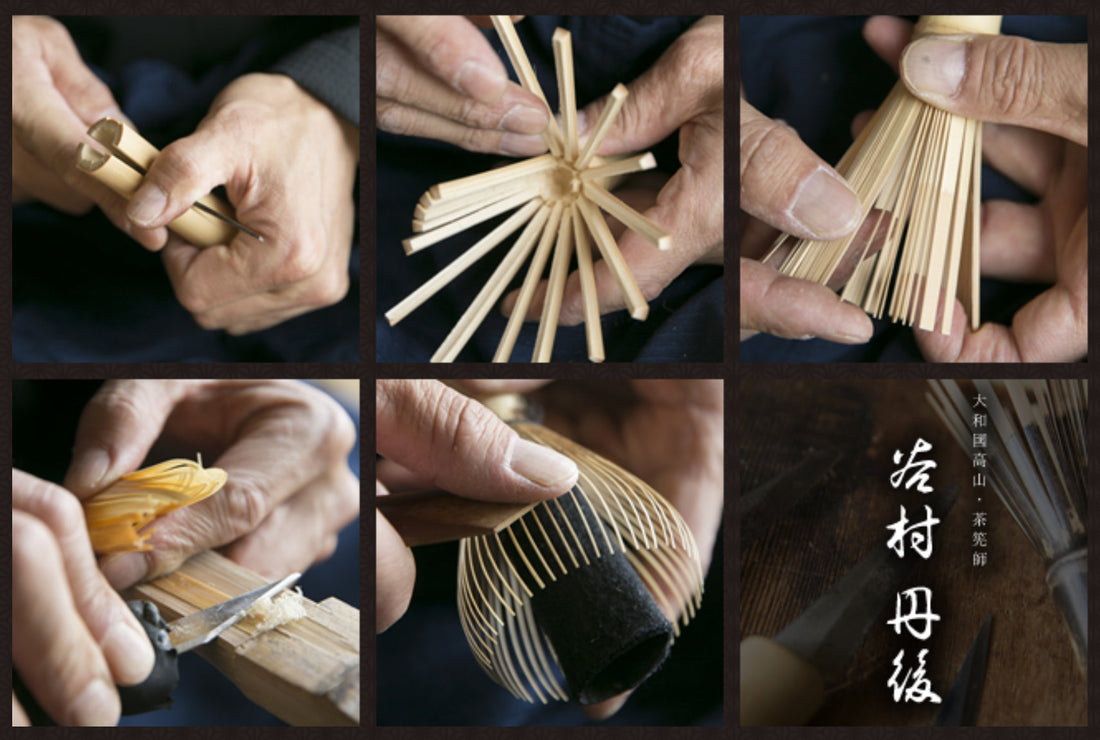
Chasen Manufacturing Secrets: At the Heart of the Craft
The Chasen, or "tea whisk," is the beautifully intricate instrument used to mix powdered tea with hot water. Preparing excellent matcha requires an equally exceptional chasen, handcrafted from meticulously selected bamboo. The Chasen is skillfully hand-carved from a single piece of bamboo so that it does not warp or break easily. The tea whisk's unparalleled functional aesthetic reflects the Japanese soul. A whisk made in the city of Takayama is the genuine article, with a delicate finish and a suppleness in its bamboo fibers not even approached by cheap imported whisks. The secret to producing exceptional whisks, delicate yet resilient, is to maximize the use of the finest Japanese bamboo.

Fine-grained hachiku (Henon bamboo), with its straight fibers, is the choice of the Urasenke tea school and is best used when it is about three years old. The bamboo is first boiled to remove oil and dirt. If this step is neglected, the wood will quickly discolor. Then, in the dead of winter, the bamboo is sun-dried in the rice fields around Takayama, an area swept by icy winds from January well into February. During this month or more of drying, the green bamboo gradually takes on a whitish hue. Left for another two or three years in storage, it takes on a distinctive amber hue.
A length of hachiku bamboo produces only three or four tea whisks. This is because the joint on the whisk must be precisely positioned, with approximately 9 centimeters of bamboo above and 3 centimeters below.
After thinly shaving the outer layer of the bamboo piece, the section above the joint is divided into 16 equal sections. Each divided section is about 4 millimeters wide; then the inner part of each strip is hollowed out, leaving a skin about 1 millimeter thick. Each of these strips is then divided into 10. In this way, 80 outer teeth and 80 inner teeth—a total of 160—are formed for a whip that will be known by the number of outer teeth; an 80-tooth whip.
The next step in the process is aji-kezuri, or tooth shaving. Measuring less than 1 millimeter thick, the teeth are softened in hot water and shaved more thinly on the inside, the master craftsman working purely by touch.
The next step is mentori (rounding the ends of the outer lines), a delicate operation that prevents the matcha green tea powder from sticking to the teeth.
Next, the artisan weaves inside and out to separate the outer teeth from the inner teeth, a process known as shitaami, and wraps the thread twice around the outside (uwaami).
In the final step, any remaining bamboo shards or dust at the base of the tines are removed, then the artisan grasps the inner tines and gives them a few turns. Suddenly, the final shape of the tea whisk is revealed.
